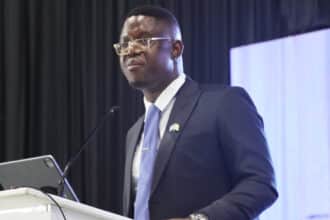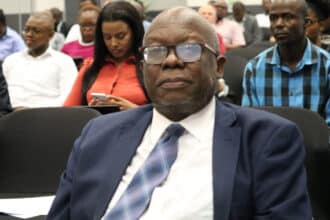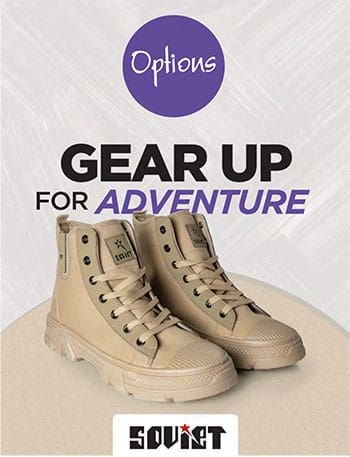Magical memories from the mountains
Sat in front of his television set back in 2013, Simmon Phuthego stumbled across a 45-second commercial that would change the course of his life forever.
Although the ad was promoting alcohol, it gave a glimpse into the thrilling exploits of South African climber, Sibusiso Vilane.
Transfixed, from that moment on Phuthego has sought adventure in the mountains, scaling some of the highest peaks in the world.
Having already stood atop Mount Kilimanjaro (5, 896m) and conquered the Russian giant, Mt Elbrus (5, 642m) – the highest points in Africa and Europe respectively – the Maun man now has his sights set on the very top of the world: the mighty Mount Everest.
Reaching Everest’s summit, some 8, 850m up in the sky, is part of the 46-year-old’s ambition to climb the Seven Summits: the highest mountains in all seven continents.
It is a daunting list that also features: Mt Aconcagua (6, 962m in Argentina, South America), Mt Denali (6, 190m in Alaska, North America), Mt Viston (4, 892m in Antarctica) and finally Mt Carstensz (4, 884m in New Guinea, Oceania).
By November next year, Phuthego hopes to have placed the Botswana flag on the summit of one of these mountains.
The adrenaline junkie intends to use the sport and his international standing to raise global awareness about conservation and communities co-existing with wildlife in Kavango-Zambezi (KAZA), a vast area that cuts across five countries including: Botswana, Zimbabwe, Angola, Zambia and Namibia.
Sharing his incredible story this week, Phuthego chats with FRANCINAH BAAITSE…
Thank you for your time, what have you been up to recently?
I am following a dream of doing the Seven Summits, in seven continents.
Every continent has a highest mountain so I want to reach the summit and place the flag of my country on all the seven summits.
So far I have done two: Europe and Africa; I am looking forward to doing North and South America, Asia and Antarctica.
Tell us about your fundraising project?
I want to raise funds for victims of wildlife in the KAZA area because we have the same problem, especially up North.
I want to use my expeditions of mountaineering to raise awareness around human-wildlife conflict and raise funds to assist victims, while at the same time promoting co-existence and conservation.
We will do education to promote that, especially in Botswana where there are a lot of wild animals.
How are you going to achieve this?
I have an NGO called the Simmon Phuthego Organisation, which was registered this year.
In this organisation there is a subsidiary company called KAZA Co-existence Bush Charity Walk.
We want this walk to be held in every [KAZA] country, every year.
The inaugural bush walk will be in Botswana in Maun this December, from Matlapana Old Bridge to Boro area.
The maximum distance will be 30 kilometers and tickets and stalls are already on sale.
Tickets are available at all Super Spars country wide.
Have you identified the first recipients?
Yes, Nkoketsang Monnawatsheko and her daughter will benefit from the first walk which has been organised specifically to help them.
The two were attacked by a crocodile in Thamalakane River in Maun in 2020 while they were harvesting tswii (water lilly).
Nkoketsang lost her arm while her daughter lost her hand.
So life has not been easy for them.
They sold tswii for a living but due to the injuries they can no longer harvest it.
And doing simple house chores such as washing clothes and dishes is no longer the same for them we want to help renovate their house, buy them a washing machine among other basics and restock their tuckshop just so they can get by.
They also need counselling and we plan to arrange that for them.
It is certainly a great initiative, but what’s the connection between mountaineering and human-wildlife conflict?
I am an adventurist sports person.
So I am taking my mountaineering expeditions to help our people in regards to wildlife issues.
Mountaineering is my dream and I want to share it with my people by giving back to them.
When I go out there into the world, I share our life experiences, lifestyle and I do all that through international media platforms.
Hopefully we can find support from well wishers.
We wish you the best of luck with this noble project. Now, let’s talk mountain climbing – seems a bit dangerous to me, what’s the attraction?
It is a risky sport, but it is very much spiritual, very much physical and, just like any sports, it can be deadly.
Climbing allows you to self actualise.
There are a lot of lessons to learn: some climb because they are there at the venue while some of us are curious.
We want to see what lies beyond the horizon.
Sometimes we do it as a sort of comradeship to help other people and for the love of our countries.
But Botswana is a notoriously flat country – how did your passion for mountaineering come about?
I have always been a sports person and I love adventure.
So one day in 2013 when I was watching television, a commercial advert for Windhoek Lager caught my eye.
It featured this South African guy called Sibusiso Vilane: they showed him climbing a mountain.
I thought, ‘so even black people can climb mountains’ so I said, ‘why not try’.
It just hit me that this is the thing I want to do for the rest of my life.
So I am using that to educate and inspire other people that no matter where you come from, or who you are, you can achieve anything in life.
We do not have mountains in Botswana and our country is semi-arid but I am able to go to these very cold countries and conquer the mountains.
We have dreams which are our mountains; if we set our eyes and minds on their summits, we can conquer any life challenge that comes our way.
What a story! So how does the sport work: is there money to be made in mountain climbing? Are there medals up for grabs?
Sport is sport.
You can be a brand ambassador, you can write books about your life experiences, write movie scripts, documentaries or become a motivational speaker – the list goes on, including humanitarian acts of course.
I understand this is an incredibly expensive vocation, what advice can you give to any budding mountaineers out there dreaming of following in your footsteps?
The sport is expensive!
We do not even have equipment here, you hire it when you get there.
So whoever wants to venture into this kind of sport must be prepared to spend.
Also, you have to be physically fit: you need to train hard and double it up because we don’t have mountains and the weather differs.
Some people would think you are crazy when you tell them about the sport, but you just have to stay focused.
So who finances you?
My very first trip to Mount Kilimanjaro in 2014 was financed by Reaboka Mbulawa, a friend of mine.
I told him my dream and he believed in my story and said, “If you want to do it, it can happen.”
Initially I told him I wanted to do Everest and he replied, “I know you are crazy and that you can do it, but let’s start with something smaller to test your endurance,” so I took on Mount Kilimanjaro.
We called Sibusiso and I joined the South African team in 2014 and we met in Tanzania.
I didn’t know I was going to face death and defy it.
But we did it in record time of four days, all four of us.
On average it takes four to seven days but because I had a flight to catch, the guys had to sacrifice for me.
We took three days to reach the summit but one day going down!
Mbulawa funded the whole trip including flight tickets, accommodation and meals at the tune of P45, 000.
He must be a good friend!
Yes he believed in me.
In 2018 when I went to Russia I went around asking for donations and a club called Chabu-Chabu sponsored me with P30, 000 plus other cash I got from different people.
I am still grateful for their assistance, I would not have made it this far without their support.
So what’s next?
Covid-19 delayed my plans, but next year November it is Argentina, Mount Aconcagua, near the Chile border.
But of course I will try to climb smaller ones such as those in Lesoitho, Uganda and Rwanda in preparation for Aconcagua.
Good luck with that! So when you’re not scaling mountains, what else do you do for a living?
Thank you.
I used to be a farmer, but farming in Ngamiland is a challenge.
We can’t reap meaningful benefits from our cattle due to issues related to Foot and Mouth.
In fact, in 2012 I petitioned the Ministry of Agriculture regarding state of beef industry in Ngamiland.
I walked from Sehithwa to Maun in protest of unfair pricing of our cattle, poor maintenance of buffalo fence and issues surrounding control of Foot and Mouth disease in our area.
Nothing changed and then I started doing tenders.
So you’re a tender boy?
Sought of, but I am not much into tenders these days as I am focusing on the NGO.
Going back to the farming issue, when the Ministry ignored your efforts, what did that say to you?
They did not recognise me at all so I quit farming.
It is an expensive business with no profit.
Fair enough. And finally, Thank God It’s Friday, what will you be up to this weekend?
Re a jabula (fun).
I am a typical Maun person: I go out and have fun, so where fun is I will go!
But I am certain to make an appearance at Lafoux and Cresta on Friday.







